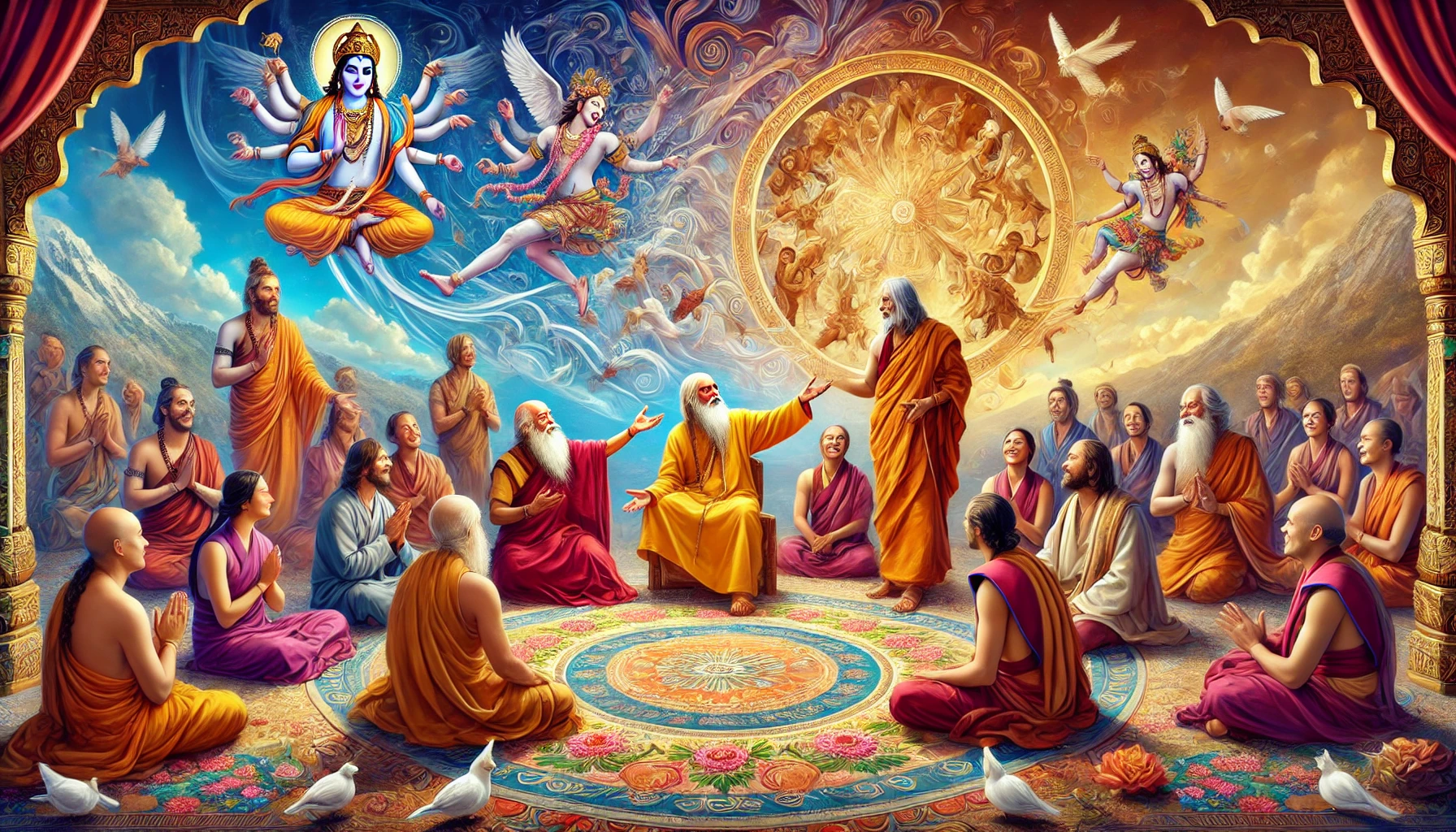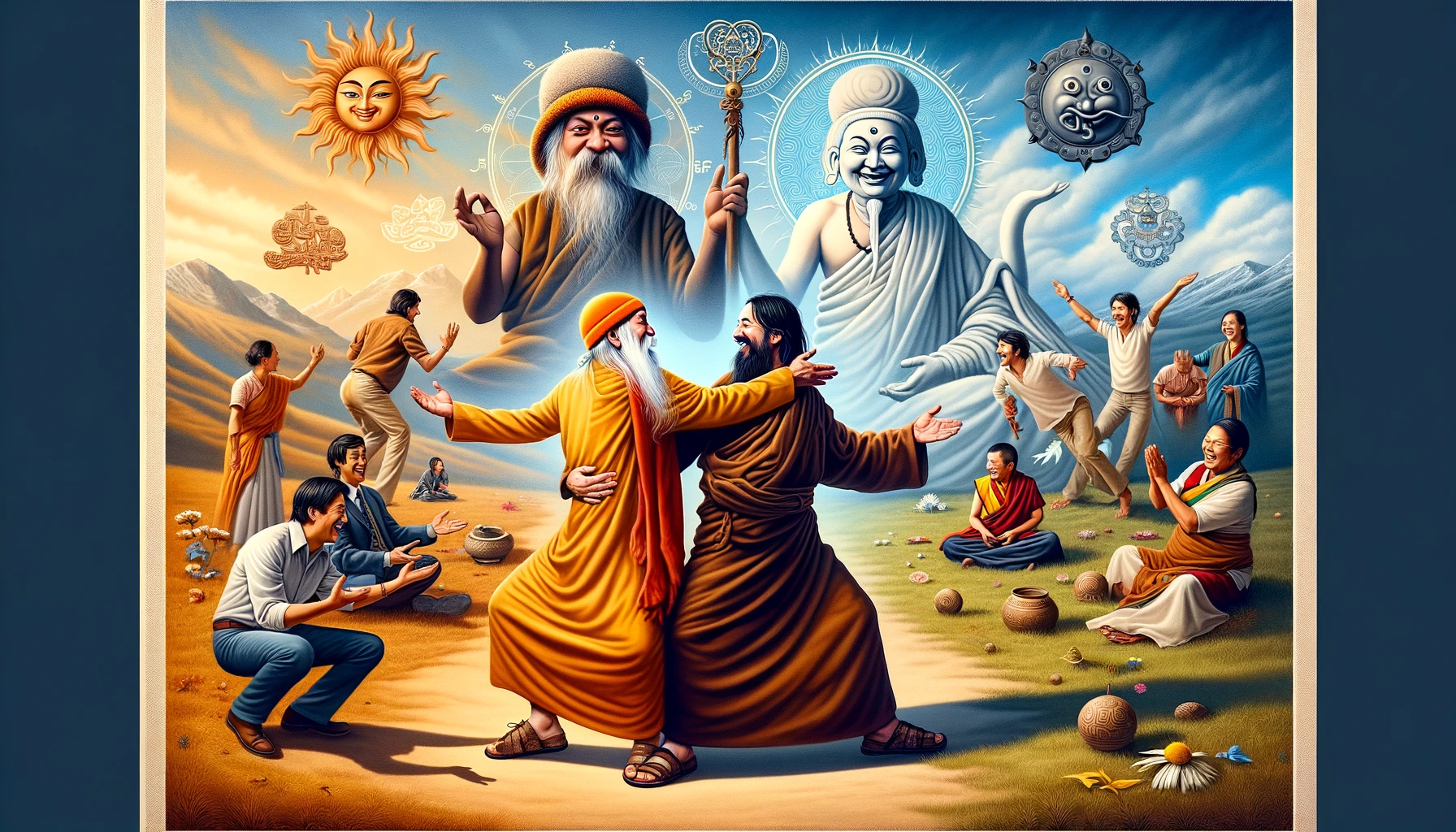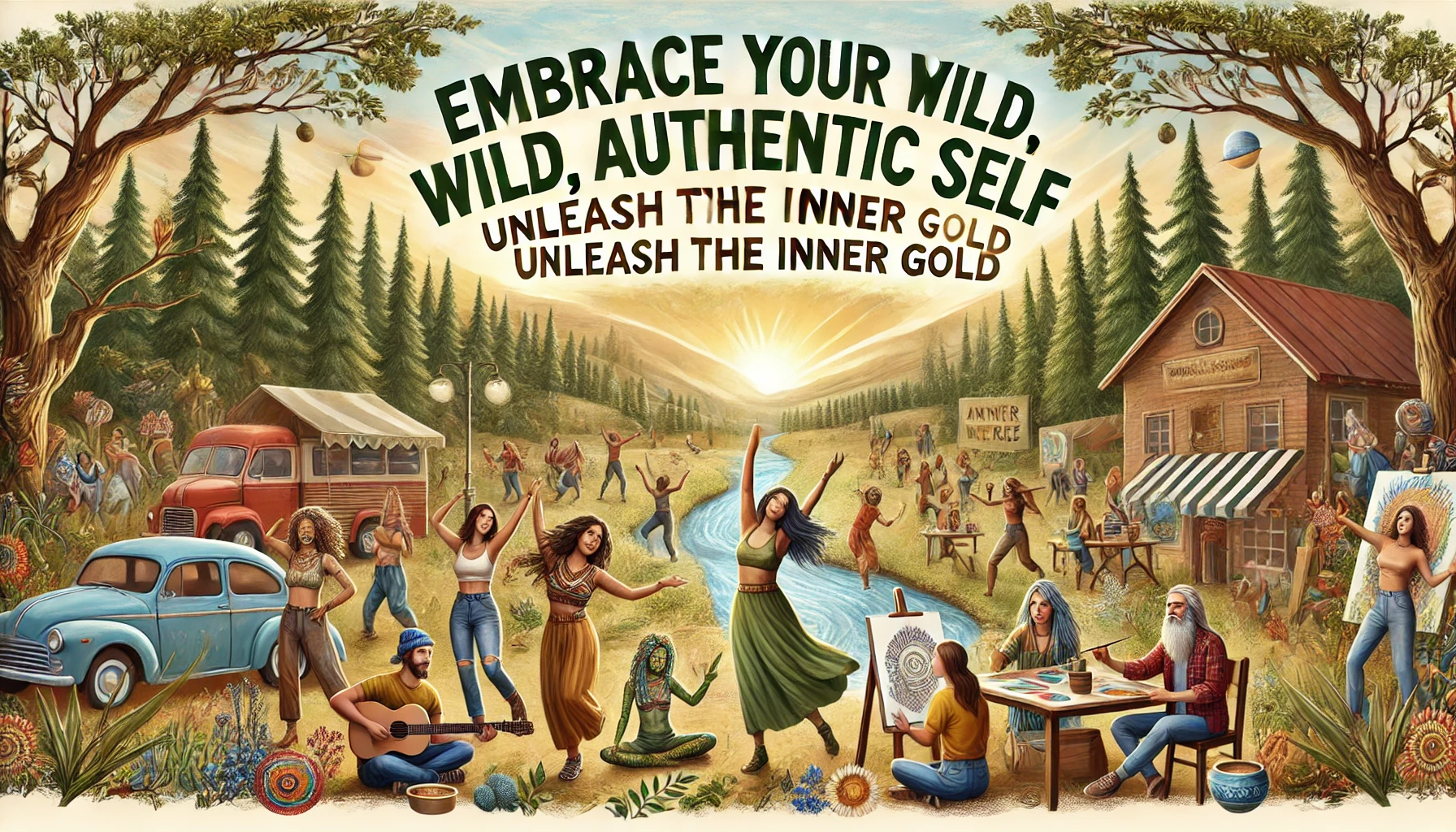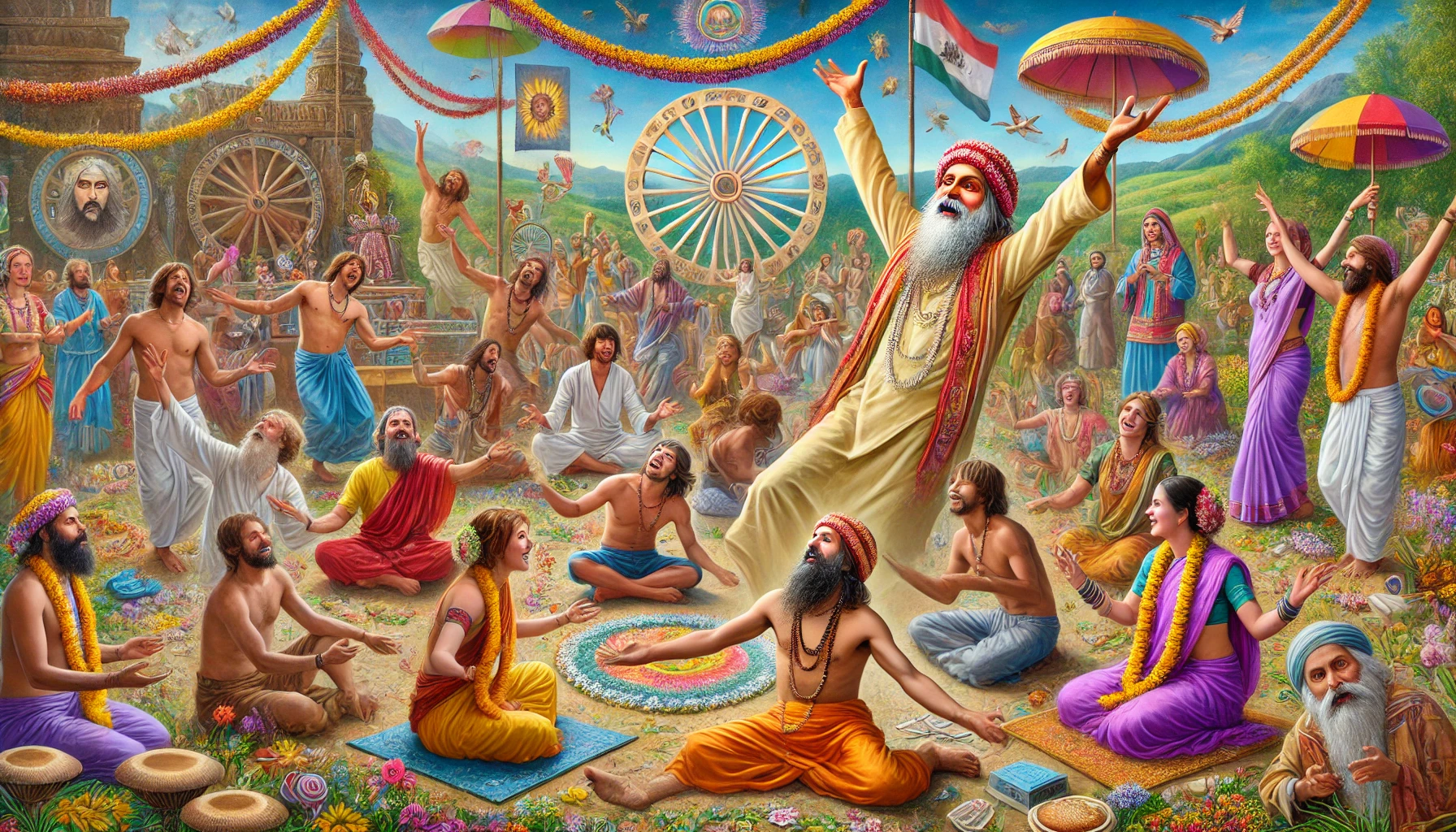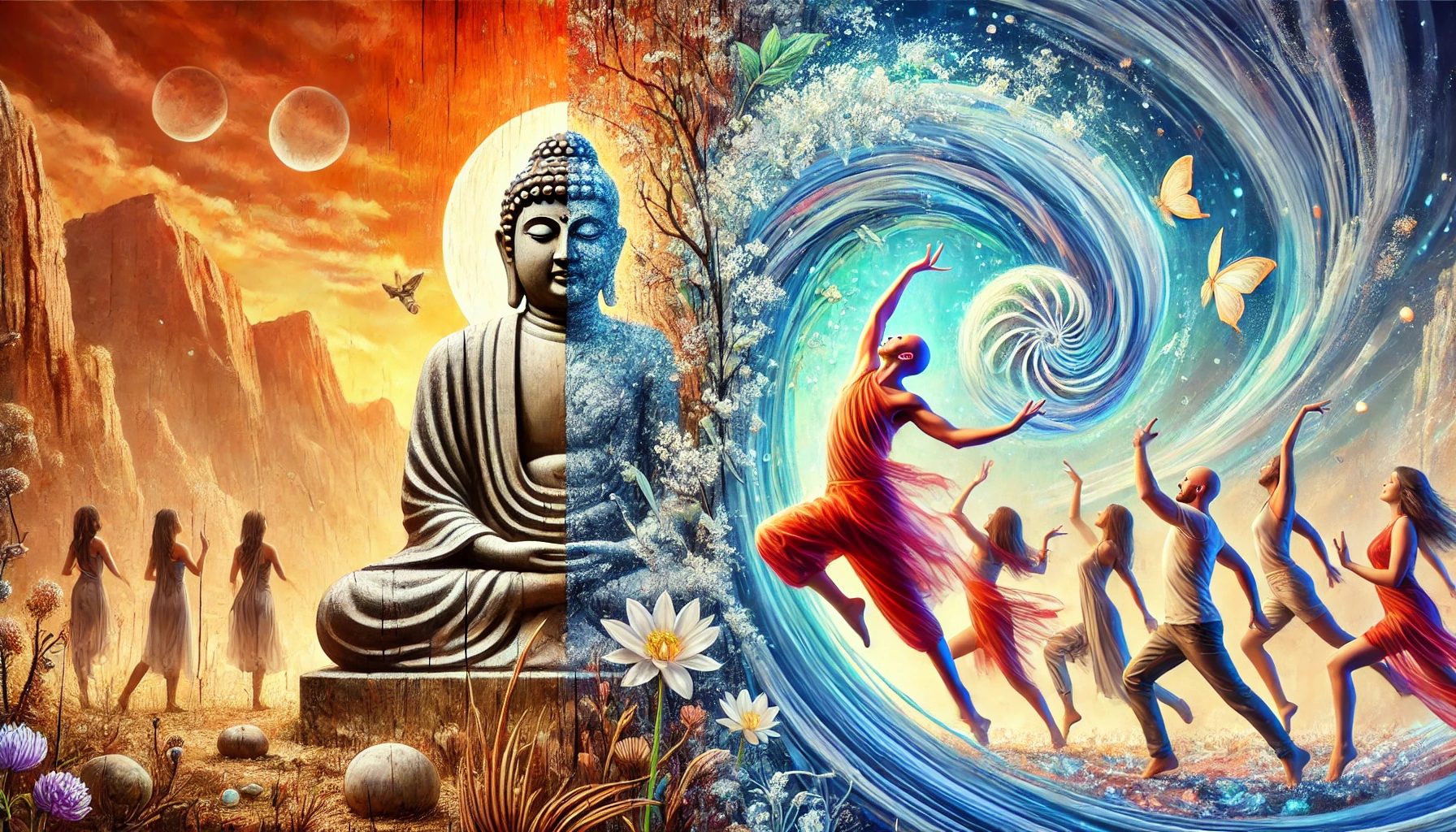
Working With Clients Who Are In Spiritually Co-Dependent Relationships
I have a lovely client whom I do intuitive readings for – and she has such a lovely nature, but she is stuck in a house with a long-time “spiritual leader” who is really less a spiritual leader and more of a cult-like personality.
This intense soul tends to berate my client on occasion, keeping her oppressed and unaware of how beautiful and capable she is. Clearly, she need not be subject to such an experience.
Being involved with a manipulative, controlling spiritual leader can have devastating consequences.
This type of relationship often involves:
Psychological Manipulation: The leader uses their perceived intuition and spiritual authority to manipulate, gaslight, and control followers. This can lead to confusion, self-doubt, and a distorted sense of reality in the victim.
Emotional Abuse: The leader may use verbal abuse, belittling, and threats to maintain control. This can lead to anxiety, depression, and low self-esteem in the victim.
Isolation: The leader often isolates followers from friends and family, creating a dependency on the group and making it harder for the victim to leave.
Financial Exploitation: The leader may manipulate followers into giving them money or other resources, leaving the victim financially vulnerable.
These tactics are common in cults and can leave lasting psychological scars. It’s crucial to recognize the signs and seek help if you or someone you know is involved in such a relationship.
Cult Deprogramming Techniques
Deprogramming is a complex process that requires a multi-faceted approach. Here are some techniques that could be helpful:
Establish Trust and Rapport: Building a safe, non-judgmental space for your client is crucial. Let them know you believe them and are there to support them.
Education: Help your client understand the dynamics of cults and the tactics used by manipulative leaders. This can empower them to see their situation more clearly.
Critical Thinking: Encourage your client to question the leader’s teachings and authority. Help them develop critical thinking skills to evaluate the information they are being given.
Reconnect with Support Systems: Help your client reconnect with friends and family who can provide emotional support and a reality check.
Self-Empowerment: Help your client rebuild their self-esteem and sense of agency. Encourage them to make their own decisions and take control of their life.
Therapy: Professional therapy can be invaluable in helping victims of cult-like relationships process their trauma and heal.
Important Considerations
Patience: Deprogramming takes time. Be patient with your client and respect their pace.
Professional Help: Encourage your client to seek professional help from a therapist specializing in cult recovery.
Safety: If your client is in immediate danger, encourage them to seek help from law enforcement or a domestic violence shelter.
Here are some deeper spiritual and intuitive modalities you can introduce your client to, to aid in her healing and empowerment:
Energy Healing: Techniques like Reiki, Pranic Healing, or Quantum Touch can help cleanse and balance her energy field, removing any lingering negative energies from the manipulative relationship. This can create a sense of peace, renewal, and protection.
Chakra Balancing: Focusing on clearing and activating her chakras, particularly the solar plexus (personal power) and throat (authentic expression) chakras, can help her reclaim her personal power and voice.
Cord Cutting: This visualization or ritual can help sever energetic ties to the manipulative leader, allowing your client to release any remaining attachments or dependencies.
Inner Child Work: Healing childhood wounds that may have made her susceptible to manipulation can be transformative. Techniques like guided meditations or visualizations can help her connect with and nurture her inner child.
Affirmations and Mantras: Repeating empowering affirmations (e.g., “I am worthy,” “I am powerful,” “I am free”) can help reprogram her subconscious mind and reinforce her self-worth.
Connection with Nature: Spending time in nature can be deeply healing and grounding, helping her reconnect with her own intuition and inner wisdom.
Spiritual Practices: Encourage her to explore spiritual practices that resonate with her, such as meditation, prayer, journaling, or connecting with spirit guides or a higher power. This can provide a sense of guidance, support, and connection to something greater than herself.
Dreamwork: Analyzing her dreams can provide insights into her subconscious fears, desires, and unresolved issues. This can help her process her experiences and gain deeper understanding.
Additional Tips:
Intuitive Guidance: Use your own intuition to guide your sessions and tailor the modalities to your client’s specific needs. Trust your gut feelings and adjust your approach accordingly.
Empowerment: Continually emphasize her own power, intuition, and ability to make her own choices. Help her reclaim her sense of agency and trust her own inner wisdom.
Compassion: Hold a space of unconditional love and compassion for her, recognizing the pain and confusion she may be experiencing. This will help her feel safe and supported on her healing journey.
Here are some additional approaches you could consider to help your client break free from codependency and oppressive relationships:
Shadow Work: Help your client explore and integrate her shadow aspects, the repressed parts of herself that may be contributing to her codependency. This could involve journaling, guided visualizations, or working with archetypes.
Self-Responsibility: Emphasize the importance of taking full responsibility for her life and choices. Challenge her to stop blaming others or external circumstances for her unhappiness and empower her to create the life she desires.
Boundary Setting: Teach her how to set healthy boundaries with the manipulative leader and others in her life. This involves learning to say no, expressing her needs clearly, and protecting her energy.
Discernment: Help her develop her discernment skills so she can better distinguish between genuine spiritual guidance and manipulation. Encourage her to question everything and trust her own intuition.
Non-Attachment: Introduce the concept of non-attachment, which involves letting go of the need to control outcomes and surrendering to the flow of life. This can help her release her dependency on the leader and find peace within herself.
Radical Honesty: Encourage her to be radically honest with herself and others about her feelings, needs, and desires. This can help her break free from patterns of people-pleasing and codependency.
Rituals and Ceremonies: Create powerful rituals or ceremonies to mark her transition from codependency to independence. This could involve burning objects representing the old relationship, writing a letter of release, or creating a sacred space for her new beginning.
Mentorship: Offer ongoing support and mentorship as she navigates her healing journey. This could involve regular check-ins, accountability partnerships, or participation in group programs.
Self-Love Practices: Help her cultivate self-love and compassion through practices like mirror work, affirmations, or loving-kindness meditations. This is essential for breaking free from the cycle of codependency.
Here are some “outrageous” (but potentially incredibly effective) approaches you could try:
Soul Retrieval: Embark on a shamanic journey to retrieve any lost fragments of your client’s soul that may have been stolen or suppressed by the manipulative leader. This could involve drumming, chanting, and journeying to the spirit world to reclaim her lost power and wholeness.
Past Life Regression: Explore past life traumas that may be contributing to her current patterns of codependency. Help her release these old wounds and karmic ties through guided visualizations, hypnosis, or other regression techniques.
Exorcism (Energetic Clearing): If you sense any dark entities or negative energies attached to your client, perform a powerful exorcism or energetic clearing to remove them. This could involve smudging, crystal healing, sound therapy, or other shamanic practices.
Power Animal Retrieval: Help your client connect with her power animal, a spirit guide in animal form who can offer protection, guidance, and strength. This could involve journeying, meditation, or animal communication exercises.
Fire Ceremony: Conduct a fire ceremony to symbolize the burning away of old patterns, beliefs, and attachments. Invite your client to write down what she wants to release and offer it to the flames, allowing the fire to transmute the energy.
Plant Medicine Ceremonies: If legal and appropriate, explore the use of plant medicines like ayahuasca or psilocybin mushrooms under the guidance of experienced practitioners. These powerful tools can facilitate profound healing and transformation.
Psychic Surgery (Energetic Healing): If you possess the skills, perform energetic surgery to remove any blockages or imbalances in her energy field. This could involve visualization, hands-on healing, or other intuitive techniques.
Mirroring: Use your own wild shamanic energy to mirror back to her the parts of herself she’s been suppressing or denying. This could involve embodying archetypal energies, using exaggerated gestures or vocalizations, or engaging in playful provocations to awaken her dormant power.
Shock Therapy (Spiritual): Sometimes a radical shake-up is needed to break through deeply ingrained patterns. This could involve a surprise ritual, a sudden confrontation, or a dramatic gesture to jolt her out of her comfort zone and into a new way of being.
Also
Death and Rebirth Ritual: Guide your client through a symbolic death and rebirth experience. This could involve a ritual bath, burying an effigy representing her old self, or even a “mock funeral” followed by a celebration of her new life. This can create a powerful shift in consciousness and help her break free from old patterns.
Vision Quest: Take your client on a solo journey into the wilderness, where she can fast, pray, and seek guidance from the spirits. This ancient practice can lead to profound insights, visions, and a deeper connection to her own inner wisdom.
Sweat Lodge Ceremony: Lead a traditional sweat lodge ceremony, where your client can purify her body, mind, and spirit through intense heat and prayer. This can be a transformative experience, helping her release toxins and emotional baggage.
Drumming and Chanting: Use powerful drumming and chanting to create a trance-like state, allowing your client to access deeper levels of consciousness and connect with her ancestral wisdom. This can help her break free from limiting beliefs and access her innate power.
Sacred Dance: Engage your client in ecstatic dance or other forms of sacred movement to release pent-up emotions, connect with her body, and awaken her primal energy. This can be a liberating experience, helping her shed inhibitions and embrace her wildness.
Mirror Gazing: Guide your client in a mirror gazing ritual, where she can confront her own reflection and delve into the depths of her soul. This can be a challenging but transformative practice, helping her integrate shadow aspects and reclaim her wholeness.
Darkness Retreat: Facilitate a darkness retreat, where your client spends an extended period in complete darkness. This sensory deprivation can lead to profound insights, mystical experiences, and a deep connection to her inner world.
Breathwork: Teach your client powerful breathwork techniques, such as Holotropic Breathwork or Rebirthing Breathwork, to release emotional blockages, access altered states of consciousness, and experience deep healing.
Direct Confrontation: “Enough is enough! This ‘leader’ is a charlatan feeding off your light. You’re being manipulated and controlled!”
Reality Check: “Look at yourself! You’re a divine being, not a puppet. Snap out of this illusion and claim your power!”
Provocation: “Are you really going to let this fraud dictate your life? Where is your fire, your spirit? Fight back!”
Mirroring Manipulation: “Do you feel empowered? Truly fulfilled? Or are you just another pawn in her game?”
Radical Honesty: “This is not love, it’s abuse! You deserve so much better than this toxic environment.”
Breaking the Spell: “Wake up! This is not enlightenment, it’s brainwashing. Reclaim your mind and your soul!”
Unmasking the Leader: “This ‘guru’ is a wolf in sheep’s clothing. See through the facade and expose the darkness within.”
Shattering Illusions: “This is not a spiritual path, it’s a prison. Break the chains and walk into your freedom!”
Challenging Beliefs: “Question everything! Are you thinking for yourself or just parroting her teachings?”
Calling in Higher Powers: “Invoke your ancestors, your spirit guides, the divine forces of the universe! They are waiting to assist you in your liberation.”
In these cases, here are some modalities, guided imageries, self-inquiry prompts, and challenging statements you can utilize with your client, building on the previous suggestions:
Modalities:
Emotional Freedom Technique (EFT/Tapping): Help your client tap on specific acupressure points while voicing affirmations to release trapped emotions and negative beliefs associated with the manipulative leader.
Neuro-Linguistic Programming (NLP): Use NLP techniques like reframing and anchoring to shift your client’s perspective and create new, empowering associations.
Hypnotherapy: Guide your client into a hypnotic state to access her subconscious mind and reprogram limiting beliefs and patterns.
Sound Healing: Use Tibetan singing bowls, tuning forks, or other sound therapy tools to clear energetic blockages and promote relaxation.
Guided Imageries:
Cutting Cords: Imagine energetic cords connecting your client to the manipulative leader. Visualize cutting these cords with a sword of light, severing the ties that bind her.
Reclaiming Power: Picture your client standing in a field of light, surrounded by loving beings. Visualize her reclaiming her power, her voice, and her autonomy.
Building a Protective Shield: Imagine your client surrounded by a shimmering shield of light, deflecting any negative energies or influences.
Meeting Your Inner Warrior: Guide your client to meet her inner warrior, a fierce and powerful aspect of herself who can protect her and help her stand up for herself.
Self-Inquiry Prompts:
“What are the specific ways this leader has manipulated or controlled you?”
“What are your deepest fears about leaving this relationship?”
“What are your core values, and how have they been compromised in this situation?”
“What would it look like for you to live a life of true freedom and authenticity?”
“Who are you, at your core, without this leader’s influence?”
Challenging Statements:
“You are stronger than you think. You have the power to break free.”
“Your voice matters. Don’t let anyone silence it.”
“You are worthy of love and respect. Don’t settle for less.”
“This is not your destiny. You are capable of creating a new path.”
“Trust your intuition. It will guide you towards your true north.”
Additional Tips:
Encourage Journaling: Have your client write down her thoughts, feelings, and insights throughout the deprogramming process.
Celebrate Small Victories: Acknowledge and celebrate any progress your client makes, no matter how small.
Offer Unconditional Support: Remind your client that you are there for her, no matter what.
Collaborate: Work with other professionals, such as therapists or counselors, to provide comprehensive support.
Given that she is not 100% aware of having been brainwashed or misled or harmed, here are some self-inquiry and guided questions you can ask your client to gently nudge her towards recognizing the manipulation and harm she’s experienced:
Focus on Feelings:
“How do you feel after interacting with this leader? Do you feel uplifted, energized, and empowered, or drained, confused, and self-doubting?”
“When you’re not around this leader, how do you feel? More relaxed, at peace, or anxious and worried about what they might think?”
“What emotions come up when you think about leaving this relationship? Fear, guilt, relief, excitement?”
Questioning Authority:
“Why do you trust this leader’s judgment more than your own intuition?”
“Have you ever questioned their teachings or felt uncomfortable with their methods?”
“Do you feel like you have the freedom to disagree with them or make your own choices?”
Examining Impact:
“How has this relationship impacted your relationships with friends and family?”
“Has your financial situation changed since becoming involved with this leader?”
“Have you noticed any changes in your mental or emotional well-being?”
Exploring Alternatives:
“If you weren’t involved with this leader, what would your life look like?”
“What are your dreams and aspirations outside of this group?”
“What other sources of spiritual guidance or support could you explore?”
Encouraging Critical Thinking:
“What evidence do you have that this leader’s teachings are true?”
“Have you ever researched or sought out different perspectives on these beliefs?”
“Can you think of any examples where the leader’s actions or words contradict their teachings?”
Affirming Self-Worth:
“What are your unique gifts and talents? How are they being nurtured or suppressed in this relationship?”
“What do you love about yourself? What makes you special and valuable?”
“You are worthy of love, respect, and happiness. Do you believe that?”
Reframing Intuition:
“Do you ever feel a gut instinct that something isn’t right, but then dismiss it because of the leader’s supposed intuition?”
“What would it be like to trust your own intuition more than anyone else’s?”
“How can you differentiate between your own inner wisdom and the leader’s influence?”
Exploring Relationships:
“How has this relationship impacted your ability to connect with others authentically?”
“Do you feel like you have genuine, supportive friendships outside of this group?”
“What would it be like to surround yourself with people who truly see and value you?”
Challenging Beliefs about Spirituality:
“Is spiritual growth always supposed to be painful or uncomfortable?”
“Does this leader’s version of spirituality align with your own values and beliefs?”
“Are there other spiritual paths or teachings that resonate with you more deeply?”
Identifying Red Flags:
“Have you ever felt pressured to do things you weren’t comfortable with in the name of spirituality?”
“Does this leader discourage critical thinking or questioning their authority?”
“Are you ever made to feel guilty or ashamed if you don’t follow the leader’s rules or expectations?”
Envisioning Freedom:
“If you could design a life that truly fulfilled you, what would it look like?”
“What are the things that bring you joy and make you feel alive?”
“How would it feel to live a life free from manipulation and control?”
Affirming Inner Strength:
“You are not alone. Many people have been through similar experiences.”
“You are resilient and capable of healing and growing.”
“You deserve to live a life of joy, freedom, and authenticity.”
Remember, the goal of these questions is to plant seeds of doubt and encourage your client to start questioning the narrative she’s been given. It’s a delicate process, so approach it with sensitivity and compassion.
As your client begins to recognize the manipulation, offer her unwavering support and guidance. Help her build a strong foundation of self-trust and self-worth. Remind her that she has the power to break free and create a new life filled with love, joy, and authenticity.
Deeper Self-Inquiry
Soul Purpose:
“Do you feel like your soul’s purpose is being fully expressed in this relationship?”
“Are you living in alignment with your highest values and aspirations?”
“Is this relationship supporting your spiritual growth and evolution?”
Energetic Dynamics:
“When you’re around this leader, do you feel your energy expand or contract?”
“Do you feel like you’re giving more energy than you’re receiving in this relationship?”
“Are there any energy cords or attachments that need to be severed for your highest good?”
Spiritual Bypassing:
“Is this relationship being used as a way to avoid facing deeper personal issues or unresolved traumas?”
“Are you using spirituality as a way to escape from reality or uncomfortable emotions?”
“What would it look like to face your shadows and integrate your wholeness?”
Discerning Truth:
“What is your truth, beyond the teachings of this leader?”
“What does your heart tell you about this relationship?”
“Are you willing to question everything, even the most sacred beliefs, to find your own answers?”
Awakening to Your Power:
“What would it mean to fully step into your power as a sovereign being?”
“How can you use your gifts and talents to create a positive impact in the world?”
“What are you truly capable of when you’re not limited by fear or doubt?”
Guided Questions for Deeper Exploration:
“If your soul could speak to you right now, what would it say about this relationship?”
“Imagine you’re standing at a crossroads. One path leads to staying in this relationship, the other to leaving. What do you see, hear, and feel on each path?”
“If you could create a life that was a true expression of your soul’s purpose, what would it look like? What would you be doing? Who would you be surrounded by?”
“What are the biggest lessons you’ve learned from this experience? How have they shaped you and helped you grow?”
“What is the highest vision you have for your life? What are you willing to do to make that vision a reality?”
Exploring Past Lives:
“Have you ever considered that past life experiences might be influencing your current relationship dynamics?”
“If you were to journey into a past life where you encountered a similar power dynamic, what lessons could you learn from that experience?”
“Are there any karmic patterns or soul contracts that need to be healed or released in order to move forward?”
Connecting with Higher Self:
“What guidance would your Higher Self offer you about this relationship?”
“If you could commune with your Higher Self, what questions would you ask?”
“How can you strengthen your connection to your Higher Self and receive its guidance more clearly?”
Embracing Shadow:
“What aspects of yourself are you suppressing or denying in order to fit into this group or please the leader?”
“How can you embrace your shadow aspects and integrate them into your wholeness?”
“What gifts and wisdom can you gain from exploring your shadow side?”
Redefining Spirituality:
“What does true spirituality mean to you, beyond any dogma or teachings?”
“How can you create a spiritual practice that is authentic and empowering for you?”
“What are the core values that guide your spiritual path?”
Embodying Sovereignty:
“What does it mean to be a sovereign being, fully responsible for your own life and choices?”
“How can you reclaim your sovereignty and live in alignment with your highest truth?”
“What steps can you take to create a life that honors your autonomy and individuality?”
Manifesting Abundance:
“What limiting beliefs about yourself or the world are holding you back from experiencing true abundance?”
“How can you cultivate a mindset of abundance and attract all that you desire?”
“What steps can you take to create financial independence and freedom?”
Healing Trauma:
“Have there been any traumatic experiences in your life that have made you more susceptible to manipulation or control?”
“What resources and support do you need to heal those wounds and reclaim your power?”
“How can you create a safe and nurturing environment for yourself to heal and thrive?”
Remember, these questions are meant to spark deeper reflection and encourage your client to connect with her own inner wisdom.
Here are some tell-tale signs that someone may be in a harmful relationship with a false spiritual teacher:
Emotional and Psychological Signs:
Loss of Self-Identity: The person seems to have lost their individuality, echoing the leader’s beliefs and opinions without critical thinking. They may even dress or talk like the leader.
Increased Anxiety and Fear: The person seems overly anxious or fearful, especially about displeasing the leader or deviating from the group’s teachings.
Low Self-Esteem: The person constantly doubts themselves, feels unworthy, or believes they need the leader’s approval to be “good” or “spiritual.”
Emotional Dependence: The person is overly reliant on the leader for emotional support, guidance, and validation. They may feel lost or incomplete without the leader’s presence.
Isolation and Alienation: The person distances themselves from friends and family who don’t share the group’s beliefs, or they become defensive and hostile when those relationships are questioned.
Behavioral Signs:
Obsession with the Leader: The person talks incessantly about the leader, their teachings, and the group’s activities. They may spend excessive time and money on attending retreats, workshops, or other events.
Strict Adherence to Rules: The person rigidly follows the group’s rules and doctrines, even if they seem extreme or harmful. They may feel guilty or ashamed if they deviate from these rules.
Unquestioning Obedience: The person blindly obeys the leader’s commands, even if they go against their own intuition or values. They may defend the leader’s actions, no matter how questionable.
Financial Exploitation: The person gives large sums of money or other resources to the leader or the group, often at the expense of their own well-being.
Change in Personality: The person’s personality undergoes a significant shift, becoming more submissive, secretive, or even hostile towards those who question their beliefs.
Spiritual Signs:
Loss of Personal Connection: The person loses touch with their own inner wisdom and intuition, relying solely on the leader for spiritual guidance.
Spiritual Bypassing: The person uses spiritual practices or beliefs to avoid dealing with emotional pain or real-world problems.
Fear-Based Spirituality: The person’s spiritual practice is focused on fear, punishment, and the need for salvation or enlightenment through the leader.
Exclusivity and Superiority: The person believes that their group or leader holds the only truth and that they are superior to those who don’t share their beliefs.
Lack of Personal Growth: Despite their involvement in the group, the person shows little personal growth, transformation, or genuine spiritual insight.
It’s important to remember that these are just potential signs, and not everyone who exhibits them is necessarily involved with a harmful spiritual teacher. However, if you notice a cluster of these signs in someone you care about, it’s important to express your concerns and offer support.
Codependency vs. Co-interdependence in Spiritual Relationships
In a codependent spiritual relationship, the individual’s sense of self-worth and identity becomes enmeshed with the leader or the group. They rely on external validation and approval, often sacrificing their own needs and desires to please the leader or maintain their position within the group. This can lead to a loss of personal autonomy, emotional manipulation, and an unhealthy power dynamic.
In contrast, a co-interdependent spiritual relationship is characterized by mutual respect, healthy boundaries, and a balance of power. Both individuals maintain their own autonomy and sense of self while also supporting and empowering each other’s spiritual growth. This dynamic fosters healthy interdependence, where both parties can rely on each other for support without sacrificing their individuality or autonomy.
Nuances in Day-to-Day Life:
Decision-Making: In a codependent relationship, decisions are often made based on pleasing the leader or adhering to group norms, even if they go against the individual’s own intuition or values. In a co-interdependent relationship, decisions are made collaboratively, with both individuals’ needs and perspectives considered.
Communication: Codependent communication is often marked by passive-aggressiveness, guilt-tripping, or manipulation. Co-interdependent communication is open, honest, and respectful, even when discussing difficult topics.
Boundaries: In a codependent relationship, boundaries are often blurred or nonexistent, leading to enmeshment and a lack of personal space. Co-interdependent relationships have clear boundaries that respect both individuals’ needs for autonomy and privacy.
Emotional Expression: Codependent individuals may suppress their emotions or feel afraid to express them honestly for fear of upsetting the leader or the group. Co-interdependent individuals feel safe to express their emotions authentically without fear of judgment or rejection.
Being on Your Toes:
Observe the Power Dynamic: Pay attention to how decisions are made, who holds the authority, and whether both individuals’ needs are being considered equally.
Notice Communication Patterns: Are conversations open and honest, or are there undercurrents of manipulation or passive-aggressiveness?
Examine Boundaries: Are personal boundaries respected, or is there a sense of enmeshment and lack of individuality?
Tune into Emotions: How does the individual feel after interacting with the leader or the group? Are they energized and empowered, or drained and depleted?
Immediate Actions:
Encourage Self-Reflection: Help your client reflect on the dynamics of the relationship by asking open-ended questions that encourage introspection and self-awareness.
Educate on Healthy Relationships: Provide resources on healthy relationships, boundaries, and co-interdependence.
Support Autonomy: Encourage your client to make independent decisions and express their own opinions, even if they differ from the leader or the group.
Foster Self-Care: Help your client prioritize self-care and establish healthy boundaries to protect their energy and emotional well-being.
Seek Professional Help: If the codependent patterns are deeply ingrained, encourage your client to seek professional therapy or counseling to address the underlying issues.
By addressing these issues head-on, you can empower your client to break free from codependency and cultivate a healthy, co-interdependent spiritual relationship based on mutual respect, trust, and empowerment.
Subtle Ways a Codependent Faux Spiritual Leader Might Enable Oppression:
Reinforcing Dependency: The leader might subtly discourage independent thinking or decision-making, emphasizing the importance of relying on their guidance and wisdom. They might use phrases like “Trust the process,” “Surrender to the divine plan,” or “I know what’s best for you.”
Gaslighting: The leader might subtly question the follower’s perceptions or experiences, making them doubt their own reality. They might say things like “You’re overreacting,” “You’re misinterpreting my words,” or “You’re not spiritually advanced enough to understand.”
Love Bombing: The leader might shower the follower with excessive praise, attention, and affection, creating a sense of specialness and exclusivity. This can make it harder for the follower to recognize the manipulation and control.
Creating Guilt and Shame: The leader might subtly guilt-trip or shame the follower for expressing doubts, questioning their authority, or seeking outside support. They might use phrases like “You’re not being a good student,” “You’re ungrateful for my guidance,” or “You’re not living up to your potential.”
Isolating the Follower: The leader might subtly encourage the follower to distance themselves from friends and family who don’t share their beliefs. They might say things like “They don’t understand your spiritual journey,” “They’re holding you back,” or “You need to prioritize your spiritual growth above all else.”
Things Your Client Could Say to Unwind the Dynamic:
Expressing Disagreement: “I appreciate your guidance, but I have a different perspective on this issue.”
Setting Boundaries: “I need some time to reflect on this on my own.”
Questioning Authority: “Could you explain why you believe this is the best course of action?”
Seeking Outside Support: “I’m going to talk to a friend/therapist about this to get a different perspective.”
Affirming Independence: “I trust my own intuition and I’m capable of making my own decisions.”
By expressing her thoughts and feelings assertively, setting boundaries, and seeking outside support, your client can begin to break free from the codependent dynamic and reclaim her power.
It’s important to note that this process may take time and patience. The leader may not respond well to these changes at first, and your client may experience feelings of guilt, fear, or doubt. However, with your support and encouragement, she can gradually reclaim her autonomy and create a healthier, more balanced relationship.
Affirmations and Declarations for Your Client to Say to Herself:
Empowerment:
“I am a powerful and sovereign being.”
“I trust my own intuition and wisdom.”
“I am capable of making my own decisions.”
“I deserve to live a life of freedom and authenticity.”
“I am worthy of love, respect, and happiness.”
Self-Worth:
“I am enough, just as I am.”
“My value does not depend on anyone else’s approval.”
“I am a unique and valuable individual.”
“I love and accept myself unconditionally.”
“I am worthy of all good things.”
Breaking Free:
“I am breaking free from codependency.”
“I am reclaiming my power and autonomy.”
“I am creating a life that is true to myself.”
“I am releasing all attachments that no longer serve me.”
“I am stepping into my full potential.”
Statements to Say to the Faux Spiritual Leader:
Setting Boundaries:
“I appreciate your guidance, but I need to make my own decisions.”
“I need some space to explore my own path.”
“I’m not comfortable with that, and I’m going to do what feels right for me.”
“I won’t be attending the next gathering/retreat/workshop.”
“I’m limiting my interactions with you for now.”
Expressing Disagreement:
“I respect your opinion, but I disagree.”
“I have a different perspective on this issue.”
“I’m not sure that aligns with my values.”
“I’m going to follow my own guidance on this.”
“I’m not convinced that’s the right path for me.”
Asserting Autonomy:
“Thank you for your support, but I can handle this myself.”
“I’m making my own decisions from now on.”
“I’m taking responsibility for my own life and choices.”
“I’m exploring other spiritual paths and teachers.”
“I’m grateful for our time together, but I’m moving on.”
Remember, the key is to be assertive, clear, and direct. Your client should avoid apologizing or justifying her choices. She should speak her truth calmly and confidently, even if the leader reacts negatively.
It’s always time for a rebirth. The Shankara Oracle Can Help You!
Get The Shankara Oracle and dramatically improve your perspective, relationships, authentic Self, and life.
